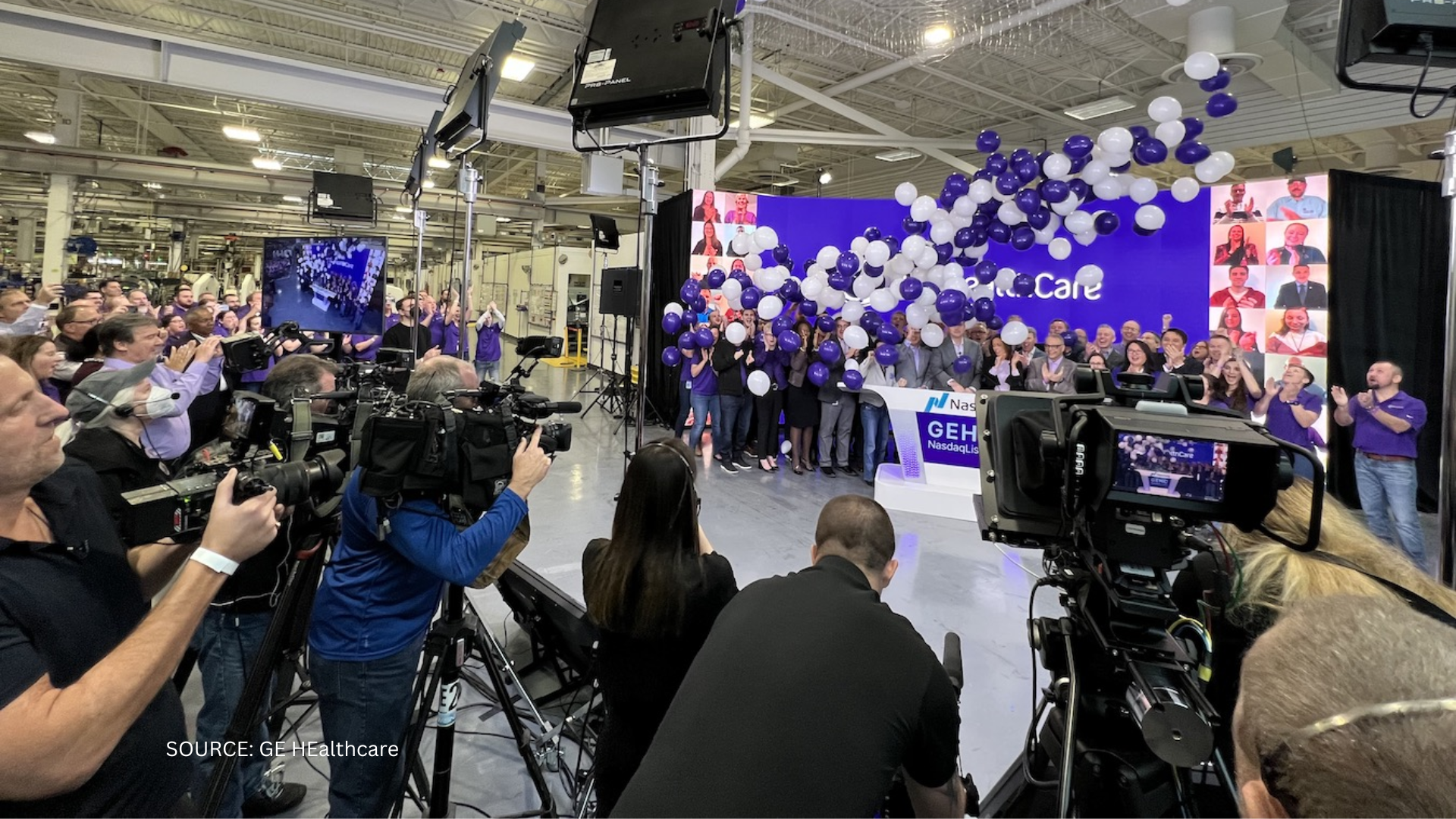
January 4, 2023 — GE HealthCare is now a 130-year-old startup. GE HealthCare completed its spinoff from parent company GE and began trading separately on the Nasdaq Stock Market (ticker: GEHC). The company, a leading manufacturer of advanced medical devices, pharmaceutical diagnostics, and other solutions critical to the future of medicine, has an urgent mission to create a world where healthcare has no limits. To achieve it, the company needs the freedom to invest and innovate, and that, said GE HealthCare President and CEO Peter Arduini, is best accomplished by going it alone.
The separation completes a process that began in late 2021 and will eventually see the 130-year-old GE, formed by Thomas Edison and Elihu Thomson in 1892, split into three separate companies focused on precision healthcare, the future of flight, and the energy transition.
“Today is an incredibly exciting day for GE HealthCare as we become an independent company and start a new chapter as a standalone global leader in precision care,” said Arduini. “We are on the verge of true industry transformation as digital innovation reshapes how providers and patients experience our products and services, with an increased need for more precise, connected, and compassionate care.”
The spinoff of GE HealthCare comes at a time of urgent change in the healthcare industry, which is seeing rapid shifts in how care is consumed and delivered. Patients and providers are generating staggering amounts of data. The 4 million scanners and other medical devices that GE HealthCare has installed globally are one major source. But much of that data is not being utilized, Arduini told investors at a company event in December. The future of medicine, and the opportunity for GE HealthCare, lies in connecting patient data throughout a provider’s digital ecosystem so that doctors can access it how and when they want and tailor diagnoses and treatments to the individual — what’s known as precision care.
“By harnessing data and leveraging artificial intelligence, we can help our customers deliver precision care — an approach to healthcare that puts the patient at the center of their treatment,” Arduini said during the presentation last month.
To get there, though, GE HealthCare needed to part ways with its parent of more than a century. To be sure, GE has been the leading innovator in medical technology going back to Thomson’s invention of the X-ray machine, based on tinkering with Edison’s lightbulb. In the years since, GE has led the way in ultrasound and MRI scanning and built a digital services business around its evolving Edison platform, which allows healthcare systems to link their devices and data and even use apps developed by third parties. And along with those innovations has come growth: GE HealthCare has 51,000 employees spread across 160 countries, with a focus on AI-enabled medical imaging and software that securely analyzes patient data to help clinicians speed up and improve care, as well as contrast agents that help doctors peer inside the human body.
However, to seize the opportunity that precision care represents, GE HealthCare needed to be free to decide when, for example, to purchase a technology that complements its products and when to invest in its own research.
One recent example that highlights the kind of thinking the standalone company hopes to embody going forward is the acquisition last year of a company developing hypersensitive X-ray detectors using “Deep Silicon,” which may be able to substantially boost the details that CT machines can see inside the human body. By combining the new technology with GE HealthCare’s CT business, doctors may be able to inspect tumors and lesions in a way they haven’t before.
As more of the world gains access to the latest technology and demands the highest level of care, GE HealthCare thinks its addressable market will expand from $84 billion to $102 billion by 2025. But that growth comes in the face of stubborn barriers to accessing medicine and troubling trends that suggest many healthcare workers are burned out by the COVID-19 pandemic and by the growing toll from a combination of tedious administrative tasks and trouble accessing patient data when and how they need it.
Yihao Zhang, who leads GE HealthCare in China, notes that China has more than 900,000 hospitals in the primary care market, but fewer than a fifth are equipped with a CT scanner and only a quarter have a mammography machine.
“There is a significant resource imbalance,” says Zhang, noting that training on how to use diagnostic equipment also lags. “I think our purpose really fits into this.”
Spinning off a company as large as GE HealthCare takes some work. GE Chairman and CEO and GE Aerospace CEO H. Lawrence Culp Jr., along with Arduini and the company’s senior leaders, had a laundry list of goals ahead of the launch, including recruiting a diverse and accomplished board of directors. The new company also had to choose a name, logo, and color and decide how to describe the company’s mission, things that matter greatly when your product is helping a soon-to-be mom and her care team assess the health of a fetus or helping to diagnose a potential cancer. “Compassion Purple” is a fitting choice for the new company, which is using this moment to more closely align to their work supporting patients and providers.
Above all, Arduini said, the new company’s identity reflects both its heritage as a part of GE that brought the world lifesaving inventions and as a technology company that makes its living through compassion. There are 9,000 field service engineers at GE HealthCare who visit hospitals, clinics, and doctors’ offices to keep millions of devices running around the clock, and 5,000 software engineers building applications to make the delivery of care ever more seamless.
“GE HealthCare is dedicated to our purpose of creating a world where healthcare has no limits,” said Arduini, “and we look forward to delivering for providers, patients, and shareholders in the years ahead.”
SOURCE: GE Healthcare


